#georgia backus
Text
Archivists on the Issues: Fictional Archivists Out in the Open [Part 1]
Archivists on the Issues is a forum for archivists to discuss the issues we are facing today. Today’s post comes from Burkely Hermann (me), Metadata Librarian for the National Security Archive and current I&A Blog Coordinator. There will be spoilers for each of the books, animated series, films, and other media he will be discussing. It was published there on March 8, 2023 and will be published on my Wading Through the Cultural Stacks WordPress blog in late September.
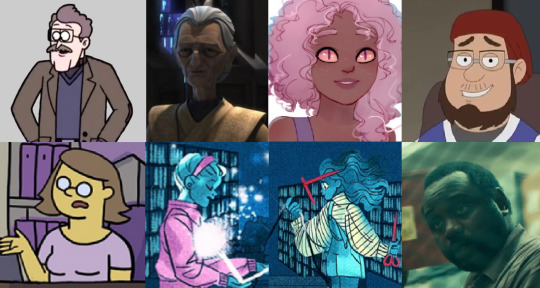
Eight archivists-of-sorts in fiction. Top row, from left to right: Archie the Archivist (Regular Show), Jocasta Nu (Star Wars), Sunati (Always Human), Russ (Be Cool, Scooby Doo!). Bottom row from left to right: Unnamed archivist / records clerk (My Dictator Boyfriend), Atropos (Lore Olympus), Clotho (Lore Olympus), and Clark (Joker)
In January 2018, Cate Peebles wrote about examples of archives in popular culture, specifically in true crime documentaries. In her post, on this blog, she argued that archivists are missing in "moments of recognition" and said that representations of actual archivists are "few and far between". She concluded that no popular image of an archivist exists, but that archivists are "more present than ever" even if unseen, adding that "without records and their keepers, there are no stories to tell." In this article, I'd like to highlight some examples of fictional archivists that I've come across through the years, especially since starting my WordPress blog on the subject.
For one, there are some characters who who merge characters of archivists and librarians. This includes a reference librarian who manages a Yale University Library room which combines elements of archives and libraries into one institution in Can You Ever Forgive Me? (2018) and a character who is almost an archivist, named Archie the Archivist (voiced by John Cygan) in Regular Show. In the latter case, Archie works in a library and becomes a guardian to protect analog data, which could have some parallels to archivists as keepers of information.
Similarly, there's Madame Jocasta Nu in Star Wars, specifically in Attack of the Clones and the Star Wars: The Clone Wars animated series. She is played by Alethea McGrath in the film and voiced by Flo Di Re in the animated series. Madame Nu is described as a librarian and archivist, but seems to manage a library-archives hybrid known as the Jedi Archives, within the Jedi Temple. She is best-known for declaring, in Attack of the Clones, that "if an item does not appear in our records, it does not exist," an arrogant and untrue statement which ignores reality of archives as memory institutions and their role in society. Madame Nu differs fundamentally from the unnamed librarian in the dark, haunting Thatcher Memorial Library shown in a scene of Citizen Kane (1941). The librarian in the latter has been described as one of the world’s meanest archivists. Played by Georgia Backus, she has her hair tied up in a bun and has "an intimidating stare on her face", acting as a "real dragon lady at the gates of knowledge." This is not the type of archives you want to go to! It is not the image which should be projected.
There are various archivists, of sorts, in other media. For instance, in the webcomic, Always Human, Rae, a friend of the protagonist, Sunati, dreams of becoming an archivist and fulfills this dream during the run of the comic. More directly, an episode of Be Cool, Scooby-Doo!, entitled "Silver Scream", features Russ, a young film archivist who works in a film archive room and is a bit eccentric. Other archivists appear in issues of the popular webcomic Lore Olympus in 1980s style dress, helping characters who request records about their past memories, or in the webcomic My Dictator Boyfriend. In the latter case, the archivist/records clerk is manipulated to write a birth form for the ruler's wife, Anna, even though the son isn't even born! [1]
There are other prominent depictions. For one, there is a records clerk, named Clark (played by by Brian Tyree Henry), who brings out a medical hospital record for Arthur Fleck in Joker (2019). However, Fleck, who later becomes the Joker, steals the record from the clerk because he hasn't filled out the appropriate paperwork to take the file with him. Then there's the well-known depiction of a classy archivist named Abigail Chase (played by Diane Kruger) who appears in National Treasure (2004) and National Treasure: Book of Secrets (2007). It is a depiction which has been oft discussed by archivists. Archivists also make an appearance in former webcomics like Power Ballad, and currently running ones like Brimstone and Roses.
There are many more examples, like supposed newspaper archivist (and former newspaper reporter) in the animated series, Stretch Armstrong, who has a newspaper archives in his basement. He declares in one episode, "some say I’m packrat, archivist I say!" Even The Simpsons has a character who runs the Springfield Historical Society, in the episode "Lisa the Iconoclast" which could be called an archivist. Rapunzel's Tangled Adventure, otherwise known as Tangled: The Series, features, along with other archivy themes, a keeper of a museum, known as The Spire, named Calliope (voiced by Natalie Palamides). She is a scholar who does magic tricks and has a messy library. Most recently, a character named Arizal (voiced by Christine Marine Cabanos) is the protagonist of Recorded by Arizal. She puts together vlogs explaining why she wants to be a record keeper, often another name for an archivist.
© 2022-2023 Burkely Hermann. All rights reserved.
Continued in part 2
Notes
[1] Hermann, Burkely. "Libraries, records, and Kore: Archives on Mount Olympus." Wading Through the Cultural Stacks, Nov. 28, 2020; Hermann, Burkely. "Popular culture and the duties of archivists." Wading Through the Cultural Stacks, Feb. 27, 2021; Hermann, Burkely. "Evil Anna and How I Learned to Love Archival Manipulation." Wading Through the Cultural Stacks, Apr. 3, 2021.
#regular show#star wars#jocasta nu#always human#be cool scooby doo#my dictator boyfriend#lore olympus#joker film#brian tyree henry#pop culture#reviews#the clone wars#sw tcw#star wars the clone wars#attack of the clones#citizen kane#national treasure#tangled#calliope#stretch armstrong
2 notes
·
View notes
Text
Julie Denise Backus Smith Monument-Savannah, Georgia
Known as the “Cemetery Jogger,” Julie Denise Backus Smith (1946-2003) was a city commissioner and philanthropist in Savannah, Georgia. She was an avid runner who completed several marathons. Her mother commissioned this bronze grave marker that celebrates her love of running.
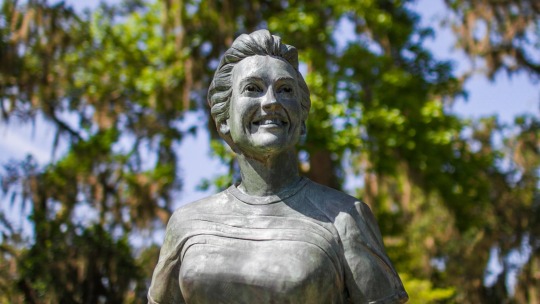
View On WordPress
2 notes
·
View notes
Text
Beer Events 8.15
Events
William Carter patented a Beer Pump (1882)
Backus Beardsley patented a Hop Picking Machine (1893)
G.H. Schneider patented brewing wort process improvements (1893)
Columbia Brewery brewed their 1st batch of beer (Pennsylvania; 1898)
Robert Clarke patented a Protector for Drinking Glasses (1911)
"Beer is Best" ad campaign begun by Brewers Journal (1920)
Frederick Wallace patented a Refrigerator Cabinet for kegs (1933)
City of Tulsa declared "Ranger Beer Week" to honor the Ranger Beers from Ahren's Brewing (Oklahoma; 1938)
Crown Zellerbach patented a Fiberboard beer Container (1967)
Bass patented a Self-Cooling Containers of Beverages and Foodstuffs (2000)
"Beerituality" film premiered (2010)
Brewery Openings
San Diego Brewing (California; 1986)
Creemore Springs Brewery (Canada; 1987)
Hartford Brewery (Connecticut; 1991)
Gate City Brewing (North Carolina; 1994)
Brandywine Brewing (Delaware; 1995)
Buckhead Brewery (Nebraska; 1995)
King Brewing (Michigan; 1995)
Poplar Head Mule Co. Brewpub (Alabama; 1995)
Tapps Brewing (Washington; 1995)
Black Bear Brewing (Georgia; 1996)
Henni's Brewery & Restaurant (South Carolina; 1996)
Nimbus Brewing (Arizona; 1996)
Stoopid Moose Brewing (California; 1996)
0 notes
Text
Introduction
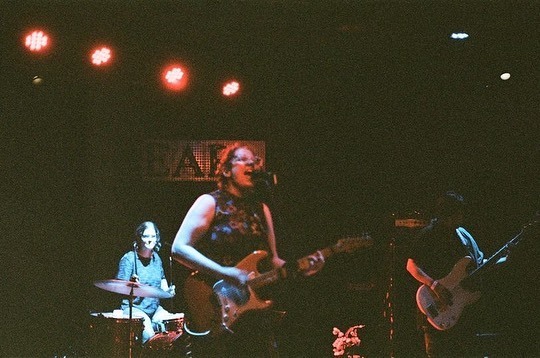
My name is Emily Backus, and I am finishing my 4th year as the General Music Specialist and Choral Director at Mary Lin Elementary in Atlanta Public Schools (and my 9th year as an elementary music teacher). I am currently in the final stretch of my Master's in Music Education degree at Georgia College. I attended the University of Georgia for my undergraduate degree, in no small part due to my twin sister's and my love of the B-52s and Athens, GA's mythical live music scene. (We had a folk band that was often described as "Everly Brothers meets Indigo Girls.") In my time at UGA, I was a proud percussion student of Professor Timothy K. Adams, Jr., who among other honors, appeared in an episode of Mr. Rogers' Neighborhood.
My performing and songwriting experience inform my pedagogy, and I have a passion for incorporating pop music/modern band, as well as encouraging student composition and songwriting. During the first year of the pandemic, I was able to do an online collaboration with my fifth graders and guest artist Kyshona Armstrong to write protest songs- we even made the news! I have completed all 3 Orff-Schulwerk levels as well as Master Class and find a great deal of inspiration from Orff's child-centered approach to creativity and play. Outside of music, I spend my time on activism, reading, video games, and taking my dog on long walks.
0 notes
Text
Apache Drums 1951

#apache drums#stephen mcnally#collen gray#willard parker#arthur shields#james griffith#armando silvestre#georgia backus#clarence muse#ruthelma stevens#james best#chinto guzman#ray bennett#sheb wooley#john war eagle#george sowards#buddy roosevelt#ray jones#chuck hayward#clem fuller#steve dunhill#gertrude astor#bill clark#noreen corcoran#stanley fraser#joy hallward#sherry jackson#george lynn#monte montague#ian murray
13 notes
·
View notes
Photo
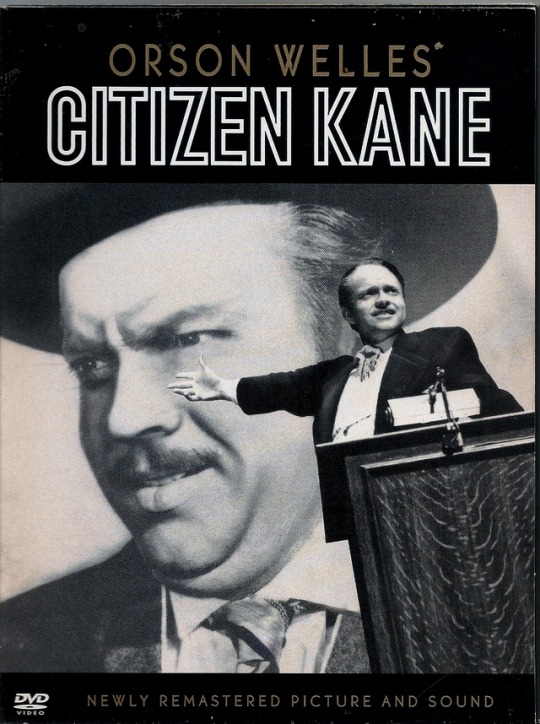
Bad movie I have Citizen Kane 1941
#Citizen Kane#RKO Radio Pictures#Joseph Cotten#Dorothy Comingore#Agnes Moorehead#Ruth Warrick#Ray Collins#Erskine Sanford#Everett Sloane#William Alland#Paul Stewart#George Coulouris#Fortunio Bonanova#Gus Schilling#Philip Van Zandt#Georgia Backus#Harry Shannon#Orson Welles#Sonny Bupp#Buddy Swan#Loretta Agar
4 notes
·
View notes
Text
“Underground,” a TV Series About a Slave-Break from a Georgia Plantation
Well, let’s see, how do you review a TV series like “Underground?” This series takes on the nastiest slice of American history, the part where white people enslave black people for generation after generation, breeding them like cattle, treating them as if family bonds meant nothing, placing the lowest type of brutal overseer to work them to death, stealing the fruits of their labor, and disporting themselves in luxury as if they were the gods of Olympus. So how should I approach it?
I could do an “industry” take on it, like Hollywood Reporter did, and analyze the shots, the actors, the screenplay, and the soundtrack, and say that they were all really awesome, but they already been there, done that. I could do what “Slate” did with it -- call out some of the weak effects that result from overdubbing modern music on antebellum cinematography, and quibble with the way slaves reaching for freedom seem too good to be true. But that’s not why I decided to sit down after watching about twelve hours of this series over the course of a couple of weekends, and devote the last of this Sunday night to writing out some of my feelings.
I decided to review it because I want to get the word out about it. Because it’s a huge relief to watch film that has lots of black actors playing serious roles, acting out their history in a drama that made me think about what it means to have no freedom except that which you will claim by reaching into the red-hot fire of self-sacrifice. Some of the main characters are beautifully drawn. Ernestine, played by Amirah Vann, is a soul etched in agony, and every scene she plays is deeply affecting. This woman can act. Head of the Macon plantation big house, she is forced to prostitute herself to the plantation master, Tom Macon, to get lenient treatment for the children he has sired upon her. She has become a well of endless cunning and tireless perseverance, capable of virtually anything, a black Aphrodite with the soul of Machiavelli. Macon himself is well-played by Reed Diamond, as a pathetic, spineless, hollow man who wears fancy clothing very well, spouts religion when necessary, and sells off the last vestiges of his humanity to transcend the limits of plantation owner and claim the laurels of political power. Noah, played by Aldis Hodge, is a man who will not acknowledge that he is any less a man because of the color of his skin, or because of the plantation system that calls him property and threatens to destroy his body if he refuses to accept his fate. Rosalee, daughter of Ernestine and Tom Macon, is played very well by Jurnee Smollett-Bell, who convincingly grows from a self-doubting “house-girl” to an intrepid and resourceful runaway. Close-ups of her pay off again and again as she charges the screen with increasing voltage as her character matures and turns into a dynamo that drives the other characters and the action forward. Alano Miller, whose IMDb bio emphasizes his academic and rhetorical skills, is presumably not yet a well-known quantity in cinema, but I don’t think we have to worry about his future career. As the crafty, deceptive Cato, a literate slave who wears a bowler hat and lords it over his fellow-bondsmen, he wears his heart well up his sleeve, keeps us guessing and occasionally has us cheering. Zeke, whose newborn infant is drowned by his wife in the opening scene of the series, is played by Theodus Crane as a heartbroken giant whose big, sad face conceals volcanic rage.
When the slave-break occurs, it is not under ideal circumstances. Although Noah has planned the escape down to the details, when Rosalee is nearly raped by a drunken overseer who drifts from maudlin sentiment over his dead wife to brutal lust for Tom Macon’s mulatto daughter, the plot explodes, and mere anarchy takes the lead. This well-devised plot twist casts the characters like dice upon the game board, and for the rest of the series, we wait to see the numbers come up. Macon, humiliated by the slave escape that he rightly fears his political backers will blame on his excessively leniency, throws fuel on the fire by posting a thousand dollar reward for each of the “Macon Seven,” dead or alive, with a $5,000 kicker for Rosalee’s live return.
On the other side of the Ohio River are two white folks who have decided to take their commitment to human rights to the next level, and make their home a station in the underground railway – John and Elizabeth Hawkes, a childless couple whose picture-perfect home conceals a big secret under the floorboards. Played by Marc Blucas and Jessica De Gouw, the couple start out naïve and end up with blood on their hands, as one thing becomes clear in this film – nobody’s getting out of slavery without quite a few people giving up their lives. Their situation is complicated by the arrival of Elizabeth’s old flame, Marshal Kyle Risdin, an earnest racist who captures slaves like a Boy Scout earns merit badges, and keeps a sharp eye on the couple in hopes of blackmailing Elizabeth out of her marital virtue.
Armed rednecks are a dime a dozen in this show, and only one has a serious role in the plot – Christopher Meloni as August Pullman, a family man being drained of his every dollar by quacks who perform hack surgery on his demented wife, bound to a mortgage he’s trying to pay off by capturing runaway slaves. Pullman’s doing a poor job of raising his eleven-year old son, and decides, for no reason discernible to a rational man, to teach the boy the slave-catching trade, and brings him along on the hunt for the extremely dangerous Macon Seven. Just because he’s handsome and well-spoken, and fronts a band of slave-catchers whose fate is to be annihilated by nameless Seminoles and runaway slaves, we’ll mention Christopher Backus playing “Jeremiah Johnson,” the poorest name choice in the show, since the original Jeremiah Johnson was a good guy in a movie directed by Sydney Pollack with this no-name guy, Robert Redford, playing the title role.
More than this, you don’t need to know. Rednecks die in droves, but most of the slaves do not escape. Back at the Macon Plantation, things go from bad to worse, and when Ernestine comes to regret her past strategies, the result for Tom Macon is unfortunate and richly merited. John and Elizabeth make a good team, despite the stresses to their marriage occasioned by a little misunderstanding with a black man who, emboldened by his first taste of freedom, takes over their kitchen, ties John up, and forces Elizabeth to whip him bloody until John at last admits that, indeed, he did once run a slave auction and sell the man’s wife. The net harvest of happiness at the end of Season One is very slim, and no one is ready to eat ice cream. There is, however, Season Two.
#undergound#ernestine#rosalee#amirah vann#reed diamond#smollett-bell#alano miller#theodus crane#slavery#antebellum#georgia#plantation#underground wgn#jessica de gouw#christopher meloni#christopher backus
2 notes
·
View notes
Link
Harold Newton did something that took guts.
An African American artist from Georgia, Newton in 1955 walked through the front door of a well-known white artist’s home in Fort Pierce, Florida, to ask A. E. Backus for advice.
“Backus had a reputation here in town for being inclusive and open to people no matter their gender, no matter their beliefs, no matter their race,” said J. Marshall Adams, Executive Director of the A.E. Backus Museum and Gallery in Fort Pierce. “Backus was very encouraging of his work, gave him critiques, gave him demonstrations, gave him art supplies to help encourage him.”
Newton soaked up everything Backus taught him.
Selling paintings along the highway
But Newton had one more hurdle to overcome if he wanted to sell his own landscape paintings.
“He couldn’t set up his own gallery, his own space in those segregated times and attract white clientele to a black studio so he had to figure out a way to get his art to his clients, to his customers,” Adams said.
Newton's solution: sell his paintings out of his car along U.S. 1. That method spread and was adopted by more than two dozen artists in the area, leading to more than 200,000 paintings and a vibrant African American art scene up and down the Treasure Coast. The artists were later given the name: Highwaymen.
Alfred Hair wasn't the first Highwaymen artist, but he was seen as the African American art movement's charismatic leader whose hustle to sell art out of the trunk of his car led to a successful career before his life was cut short when he was shot and killed at a local hangout in Fort Pierce, Florida.
Historical and museum photos of Florida's Highwaymen Artists
Alfred Hair wasn't the first Highwaymen artist, but he was seen as the African American art movement's charismatic leader whose hustle to sell art out of the trunk of his car led to a successful career before his life was cut short when he was shot and killed at a local hangout in Fort Pierce, Florida.1 of 47 Highwaymen artist Al "Blood" Black with one of his paintings in 2014.
Highwaymen artist Curtis Arnett with Attorney General Pam Bondi, left, and curator Jeanna Brunson at the Museum of Florida History in Tallahassee in 2011.
Fort Pierce Highwaymen Artist James Gibson brings one of his paintings into the Sunrise Theater to be hung in preparation for the 2007 Highwaymen Florida Artist Hall of Fame Artist Award Celebration held in November 2007.
R.L. Lewis standing in front of his Highwaymen art in 2008.
Mary Ann Carroll, the only woman of the 26 Highwaymen artists in the Florida Artists Hall of Fame, poses for a photo in her garage studio at her home on Oct. 7, 2014, in Fort Pierce.
Vero Beach painter Ray McLendon shares a laugh with fifth-grade students on March 2, 2017, at Beachland Elementary School as he signs autographs after giving a talk about Florida Highwaymen art.
Florida Highwaymen painter, R. L. Lewis puts finishing touches on painting while attending the Tallahassee Museum's (Jr. Museum) annual Market Days fund raiser held at the North Florida Fairgrounds in 2006.
Highwaymen artist James Gibson at the Tallahassee Museum of History and Natural Science's annual Market Days fund raiser at the Leon County Fairgrounds in 2007.
Highwaymen artist R.L. Lewis painting at the Tallahassee Museum of History and Natural Science's annual Market Days fund raiser at the Leon County Fairgrounds in 2007.
A. E. "Bean" Backus working on one of his paintings sometime in the 1980s.
Robert Butler, Highwayman Artist, working on a painting at the Old Capitol - Tallahassee, Florida, in 2006.
Each year the A.E. Backus Museum in Fort Pierce holds an exhibit celebrating the works of the Florida Highwaymen artists. Backus is credited for giving lessons to Harold Newton and Alfred Hair, two original Florida Highwaymen artists. The 2020 exhibit looked at the art of the Hair, who was considered the charismatic leader of the African American art movement in the area.
The A.E. Backus Museum in Fort Pierce celebrates the work and life of one of the great early Florida landscape artists. Backus also is credited for giving lessons to Harold Newton and Alfred Hair, two original Florida Highwaymen artists.
Doretha Hair Truesdell, widow of original Florida Highwaymen artist Alfred Hair, with Marshall Adams, the executive director of the A.E. Backus Museum, in Fort Pierce. Alfred Hair was considered the charismatic leader of the African American group of artists from Fort Pierce and the surrounding areas. The Backus museum has a permanent display of Highwaymen art.
The Florida Highwaymen were a group of African American artists, generally from Fort Pierce and the surrounding areas, who drove up and down U.S. 1 selling the landscape art during the 1950s and 60s.
The A.E. Backus Museum in Fort Pierce has a permanent display of Highwaymen art, and each January into February, expands that collection to encompass much of the museum. This is part of the expanded 2020 exhibit called "Driving Force."
The story of Alfred Hair
One of the artists considered to be the scene's leader was Alfred Hair. When Hair was 14 years old, he, like Newton, fell into Backus' orbit.
Hair went to the nearby segregated school in Fort Pierce — Lincoln Park Academy. It was Hair’s teacher who suggested Backus take him under his wing.
Backus taught Hair how to paint landscapes and how to make frames. Hair started to believe he could turn painting into a career, something unheard of for blacks of the time.
"The only jobs you could get was working in the fields, that was your job, in the orange groves," said Hair’s widow, Doretha Hair Truesdell. "Alfred didn’t see himself doing that. He said painting is what I’m going to do. This is my job. This is my employment."
Doretha Hair Truesdell, widow of original Florida Highwaymen artist Alfred Hair, with Marshall Adams, the executive director of the A.E. Backus Museum, in Fort Pierce. Alfred Hair was considered the charismatic leader of the African American group of artists from Fort Pierce and the surrounding areas. The Backus museum has a permanent display of Highwaymen art.
As Hair grew in the industry, he knew he would have to do things differently from his white mentor, who could set up in galleries and share his paintings with mass audiences.
So Hair came up with his own business model.
A new business model
“What he could do is lean into his talents, and one of those talents was painting fast,” Adams said. “If he could learn how to paint faster and paint more volume he would have more to sell — he would sell them for a less expensive price point than an established artist — but at the end of the day make as much money.”
Soon, Hair took a page from Newton’s playbook. He began driving up and down the highway selling his paintings.
It worked. During the early part of the 1960s Hair, and many other artists with a similar painting style, thrived.
“On Oct. 16, 1965, we moved into our house that we had built from those paintings,” said Hair Truesdell. “When we moved into that house that’s when we really exploded. We could produce about 20 paintings a day. We hired salespeople. Some of the people that are Highwaymen now were our salespeople. They sold for us, so we were really making a lot of money for that time.”
Hair and Newton’s practice of selling art out of their cars came to be used by many African American artists along the U.S. 1 corridor on Florida’s Treasure Coast.
Many found success.
More: Harry T. Moore helped thousands of blacks register to vote. It led to his assassination on Christmas night
More: Mary McLeod Bethune was born the daughter of slaves. She died a retired college president
When everything changed
However, in 1970, the African American art scene lost its charismatic leader when Hair was gunned down in a bar. He was only 29.
“Overnight, everything dies," said Hair's widow. "Nothing is left.”
Many of the African American landscape artists continued to paint, but waning interest after Hair's death coupled with new tastes and styles in the 1970s and 1980s saw much of the success fade away.
“We survived it all,” Hair Truesdell said. “We’re still living. Still standing and still we have the memory and we will always have the memory of Alfred, of his vision.”
In the mid-1990s Jim Fitch, a Florida art historian, discussed the African American painting movement of the 1960s in the St. Petersburg Times, using a label to describe their art.
How the 'Highwaymen' came to be
“That term is ‘The Highwaymen,’” Adams said. “The name came from the artery of U.S. 1 being the chief way to go up and down and sell your works of art. So it’s easy for us to, now that we have a term, to describe these artists.”
This created a new interest in their art, which is estimated to include 200,000 paintings.
One of the distinctive things that make the Highwaymen art unique is the frames and vibrant colors of the landscapes.
Especially early on, because they lacked the resources and supplies, Hair and others would paint on upson board. They framed paintings with crown molding and brushed them with gold or silver to give them a rustic look.
“I really think the board that we painted on, I just think it gave it vibrancy that you don’t get from canvas,” Hair Truesdell said. “Also, we shellacked our board, and then we put a sealant on the board, and then the paint just adhered to that sealant and I just think that it gave it life.”
The true number of Highwaymen artists has been debated, with some being considered second or third generation Highwaymen.
However, in 2004, the number of identified Highwaymen was set at 26 when they were inducted into the Florida Artists Hall of Fame.
They include: Curtis Arnett, Hezekiah Baker, Al "Blood" Black, brothers Ellis Buckner and George Buckner, Robert Butler, Mary Ann Carroll, brothers Johnny Daniels and Willie Daniels, Rodney Demps, James Gibson, Alfred Hair, Isaac Knight, Robert Lewis, John Maynor, Roy McLendon, Alfonso "Pancho" Moran, brothers Sam Newton, Lemuel Newton and Harold Newton, Willie Reagan, Livingston "Castro" Roberts, Cornell "Pete" Smith, Charles Walker, Sylvester Wells and Charles "Chico" Wheeler.
“Even though they might be painting similar subjects in a similar manner they each have their own individual viewpoints,” Adams said. “I think it’s important to honor these individual artists as well as the collective group. The collective story is really important, but it shouldn’t obscure the idea that these are individuals who are looking at subjects and painting with their own style. If you look closely you can see a wide range of different perspectives of how they approached a single subject.”
The A.E. Backus Museum in Fort Pierce celebrates the work and life of one of the great early Florida landscape artists. Backus also is credited for giving lessons to Harold Newton and Alfred Hair, two original Florida Highwaymen artists.
Highwaymen paintings can be seen at the A.E. Backus Gallery & Museum in Fort Pierce, as well as the Museum of Florida History in Tallahassee.
Many can be purchased at various websites in their honor.
There are also some pieces on display at the Smithsonian’s National Museum of African American History and Culture.
“It’s wonderful that these artists are being recognized today and they’re continuing to be recognized,” Adams said. “These works have a timeless beauty. They are of a certain time and there were certain social and political and cultural forces that shaped how they were made and how the people made them, were able to make them. They really speak beyond that.”
2 notes
·
View notes
Photo


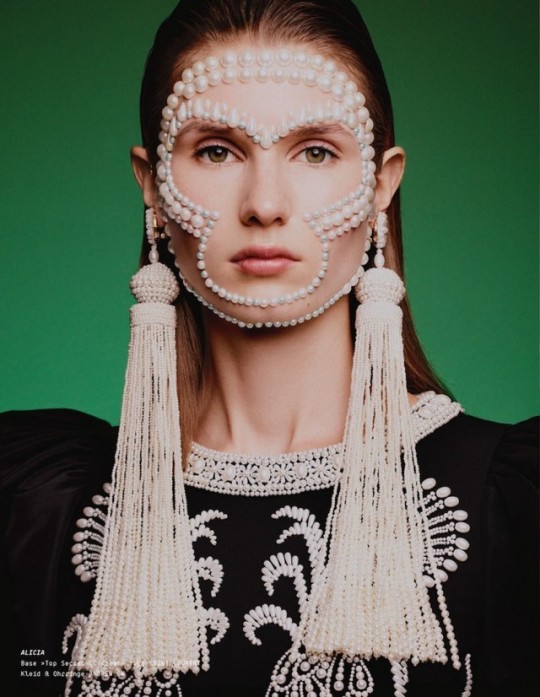







#Tessa Bruinsma#Georgia Fowler#Alicia Holtz#Sarah McCall#Nastya Cherkasova#Dayton Pangborn#Hawa Diawara#Helga Hitko#Marland Backus#top models#fashion#faves
0 notes
Photo

01-14-2017
Cause For Alarm! (1951)
http://www.imdb.com/title/tt0043390/
Cause For Alarm! is one of 47 feature length films directed by Hollywood allrounder Tay Garnett. Garnett started his career as gag writer for the legendary Mack Sennett and Hal Roach, before directing his first features at the end of the 1920s. Averaging more than two features a year between the 1920s and 1950s, Cause For Alarm! wouldn’t stand out if it wasn’t for some fine directing and, more importantly, a stellar performance by Loretta Young in one of her last feature film roles. As with a handful of other Metro-Goldwyn-Mayer productions of the 1950-1951 period whose original copyrights were never renewed, Cause For Alarm! is in the public domain.
The story told is about Ellen Jones (Young), her husband George Jones (Barry Sullivan) and his doctor Ranney Grahame (Bruce Cowling). George is bedridden, having some undisclosed heart problems, relying on the help of his wife and his doctor, whom George thinks are having an affair together. Secretly in bed does George write a letter to the district attorney, stating that Ellen and Grahame are planning to kill him by overdosing him on his heart medicine. If this is no cause for alarm, I don’t know what is.
It is an easy yet strong premise, one that has the strength of the film relying on the director and his actors. Garnett knows how to deal with suspense, gradually making the feeling stronger and stronger until the final scene finally gives us a chance to recover. The normal people in a malevolent setting, it works and it’s exciting in all its straightforwardness (though the sunny Los Angeles suburbs are for from straightforward in terms of film noir). The 74 minutes fly by and when it was finished I felt good.
7
#cause for alarm#cause for alarm!#tay garnett#mack sennett#hal roach#loretta young#barry sullivan#bruce cowling#mel dinelli#tom lewis#lawrence b. marcus#dorothy kingsley#margalo gillmore#brad morrow#irving bacon#georgia backus#don haggerty#richard anderson#andre previn#andré previn#joseph ruttenberg
0 notes
Text
Father of man suspected of training children in New Mexico to shoot up schools is a radical Islamist who headlined 2012 DNC convention event

Thursday, August 16, 2018 by: JD Heyes
Tags: compound, Democratic Party, DNC, domestic terrorism, Imam Siraj Wahhaj, insanity, Islamic extremism, keynote speaker, left cult, New Mexico, President Obama, radical Islam, school shootings, Siraj Wahhaj, terrorism, terrorists, training camp
920Views
(Natural News) In case you were wondering just how deep former President Barack Obama’s fondness for Islam goes, this should give you a really good idea.
In 2012, the Democratic National Committee launched its convention with a series of “kick-off events” that included the first-ever “Jumah at the DNC,” the term Juman being Arabic for “gathering.” That consisted of three Islam-centric events that began with afternoon Muslim prayers followed by a sermon, an Islamic banquet and an all-day festival highlighting Islam.
As Counter Jihad reported at the time:
Many of the individuals scheduled to speak during the DNC week have extremely spurious backgrounds, including, astonishingly, support for Al Qaeda and for the U.S. State Department-designated terrorist organization, Hamas.
The celebrity Imam or “Grand Imam” slated for the event is Imam Siraj Wahhaj.
Aside from Islamic ‘guests’ who support a known terrorist organization, what importance does the event have today? Because it has a lot in common with a more recent event that should concern every American.
In recent days, New Mexico police raided a rural compound, arresting 39-year-old Siraj Wahhaj and another man as part of their investigation into a missing three-year-old boy allegedly abducted from his Clayton County, Georgia home by Wahhaj. The younger Wahhaj is the son of the imam who oversaw the ‘festivities’ at the 2012 DNC convention.
While at the New Mexico compound, police discovered two women and 11 children ages ranging from one to 15 living in squalid conditions with little food. Wahhaj was wanted for the boy’s abduction, CBS News reported. Later, authorities found the as-yet-unidentified remains of a young child.
Subsequent reporting noted that police believe Wahhaj is a radical Islamist who was training at least two older boys at the compound to carry out school shootings.
USA Today reported an FBI agent testified in court this week that Wahhaj and the others were preparing attacks. Other law enforcement officials supported the FBI’s contention, adding that they believe the children were being radicalized in Muslim extremism. Local station KOB reported that the Taos County Sheriff found children holding ammunition when his team raided the compound. He also told the court that one child told police he was armed.
However, defense attorneys argued the Muslim group had a constitutional right to possess guns and freely practice their religion. Incredibly – and despite the fact that three-year-old Abdul Wahhaj’s remains were discovered at the compound — the judge, Sarah Backus, agreed in a hearing Tuesday and ordered Wahhaj and the others released on bond because she said they didn’t pose any risk. (Related: Robert Mueller complicit in allowing Islamic terrorism to proliferate in the United States.)
Another miss by the ‘mainstream’ media
But is that accurate?
As Frontpage Magazine noted further, the elder Wahhaj has a history of making very ‘controversial’ – even dangerous – statements regarding Islam in America.
“Islam is better than democracy- Allah will cause his deen [Islam as a complete way of life], Islam to prevail over every kind of system, and you know what? It will happen,” he once said.
He also said:
As long as you remember that if you get involved in politics, you have to be very careful that your leader is for Allah. You don’t get involved in politics because it’s the American thing to do. You get involved in politics because politics are a weapon to use in the cause of Islam.
And:
If only Muslims were clever politically, they could take over the United States and replace its constitutional government with a caliphate. If we were united and strong, we would elect our own emir and give allegiance to him. Take my word, if eight million Muslims unite in America, the country will come to us.
And this is the man whom the Democrats, and by extension, former President Obama, associated themselves with (and continue to do so).
Funny how the “establishment” media, despite all of their resources, haven’t put any of this together, isn’t it?
Read more about Islamic extremist terrorism at Terrorism.news.
2 notes
·
View notes
Text
The erasure of records, digitization, and 1990s Hollywood films [Part 3]
Continued from part 2
Note: This article is reprinted from my History Hermann blog, with this post published there on May 19, 2019. I published it on my Wading Through the Archival Stacks WordPress blog on Aug. 28, 2020 with some revisions because I thought it was relevant to archives, at least when it comes to films.
Why do these films matter?
"If I could take all the things that I am, all the feelings I have, all the things that I want, and somehow get them on a computer card, you would be the answer. I don't know why or how you've come along at this particular point in my life. See, that's the magic part. I'm not gonna let you go."- Dr. Sidney Schaefer talks to his girlfriend (who ends up being one of the people who is spying on him) in "The President's Analyst," a 1967 film
They matter because more and more of the records held by archival institutions are digital, specifically "born-digital" (like tweets, Facebook posts). Of course, they are a bit dated, as they came out between 1992 and 1996. However, the point that records can be changed and manipulated should be considered. There should be measures in place to make sure that the records, especially digital records, are not tampered with. Perhaps this would require fixity checks, but also could necessitate rules on the usage of records themselves.

The haunting library in Citizen Kane
At the same time, the archives themselves should not be like the dark and haunting Thatcher Memorial Library in Citizen Kane, which has what some have described as having one of the world's meanest archivists, played by Georgia Backus, with hair up in a bun "and an intimidating stare on her face, a real dragon lady at the gates of knowledge." This is not the type of archives you want to go to! This is not the image that should be projected. [3]
© 2022 Burkely Hermann. All rights reserved.
Notes
[3] The same goes for Hollywood images of old archivists like in Vampires (1998) where the church archivist is introduced, a "slight, bearded man with glasses" who is sent along on a quest," in They Might Be Giants (1971) where a wealthy lawyer, who thinks he is Sherlock Holmes, teams up with a psychiatrist "to try to rid the world of evil" and in the process, one person plays an aged archivist who, despite his problems, "does come across as the sanest person in the movie and he finds clues to track down Moriarity," or in Amityville II: The Possession (1982) when a father uses a local archives to find out about a house causing trouble for his family, and in the process, he is helped by an elderly archivist, a person who says "I've worked here for 25 years."
There are other mentions of archives, but without archivists in Arlington Road (1998), Batman Begins (2005), Beverly Hills Ninja (1997), Broken Lullaby (1994), GoldenEye (1995), Journey to the Far Side of the Sun (aka Doppelganger) (1969), L.A. Confidential (1997), Message in a Bottle (1999), Ninth Gate (1999), Rogue One: A Star Wars Story (2017), Secret Nation (1991) [Canadian film], Shooting the Past (1999), Smila's Sense of Snow (1997), The Dark Knight (2008), The Name of the Rose (1986), The Phantom (1996), and The Shadow (1994). Also, there are said to be flirtatious archivists in Carolina Skeletons (1991) and Just Cause (1995), along with helpful ones (either initially or ultimately) in Cloud Atlas (2012), Deceived (1991), Quatermass and the Pitt (1967), The Fugitive (1993), and The Mask of Dimitrios (1944).
There are also a number of films that have archivists in the background: Charlton-Brown of the F.O. (1959), Macaroni (1986), Red (2010), Ridicule (1996), Rollerball (1975), and The Age of Stupid (2009), and those that are said to have nasty or mean archivists: Blade (1998), In the Name of the Father (1993), Scream 3 (2000), The Nasty Girl [Das Schreckliche Madchen] (1990), and The Watermelon Woman (1996). Please, do not constitute this as an endorsement of any of these films, as likely they are mostly terrible.
#the president's analyst#1960s#films#1990s#born digital#the net#my fellow americans#attack of the clones#archives#archival science#archival studies#record loss#access#records management#the watermelon woman
0 notes
Text
Beer Events 8.15
Events
William Carter patented a Beer Pump (1882)
Backus Beardsley patented a Hop Picking Machine (1893)
G.H. Schneider patented brewing wort process improvements (1893)
Columbia Brewery brewed their 1st batch of beer (Pennsylvania; 1898)
Robert Clarke patented a Protector for Drinking Glasses (1911)
"Beer is Best" ad campaign begun by Brewers Journal (1920)
Frederick Wallace patented a Refrigerator Cabinet for kegs (1933)
City of Tulsa declared "Ranger Beer Week" to honor the Ranger Beers from Ahren's Brewing (Oklahoma; 1938)
Crown Zellerbach patented a Fiberboard beer Container (1967)
Bass patented a Self-Cooling Containers of Beverages and Foodstuffs (2000)
"Beerituality" film premiered (2010)
Brewery Openings
San Diego Brewing (California; 1986)
Creemore Springs Brewery (Canada; 1987)
Hartford Brewery (Connecticut; 1991)
Gate City Brewing (North Carolina; 1994)
Brandywine Brewing (Delaware; 1995)
Buckhead Brewery (Nebraska; 1995)
King Brewing (Michigan; 1995)
Poplar Head Mule Co. Brewpub (Alabama; 1995)
Tapps Brewing (Washington; 1995)
Black Bear Brewing (Georgia; 1996)
Henni's Brewery & Restaurant (South Carolina; 1996)
Nimbus Brewing (Arizona; 1996)
Stoopid Moose Brewing (California; 1996)
0 notes
Text
Eat, Drink and Stay Healthy In Savannah
Eat, Drink and Stay Healthy In Savannah
Savannah is known for its beautiful year-round sunshine, great food
Betty Bombers-All American Eatery
and cool bars
Baobab Lounge at Plant Riverside
but locals and visitors alike also enjoy parks that offer beautiful scenery and workout trails.
Lake Mayer Savannah Georgia
The Julie Backus Smith Trail at Lake Mayer is a 1.5 mile loop set within an abundance of nature and wildlife.
Along the…
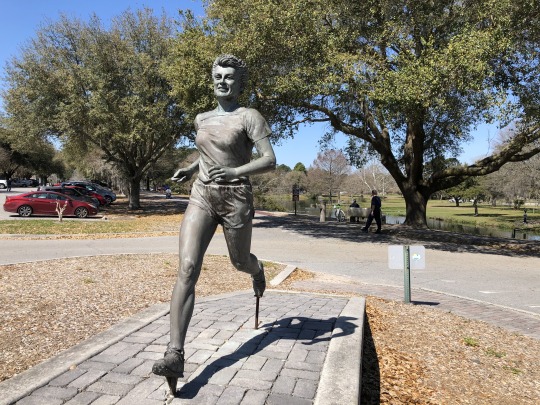
View On WordPress
#Baobablounge#BettyBombers#chathamcountyparks#juliebackussmithtrail#lakemayer#plantriverside#runningladysculpture#Savannah#WalkingTrails
0 notes
Link
Harold Newton did something that took guts.
An African American artist from Georgia, Newton in 1955 walked through the front door of a well-known white artist’s home in Fort Pierce, Florida, to ask A. E. Backus for advice.
“Backus had a reputation here in town for being inclusive and open to people no matter their gender, no matter their beliefs, no matter their race,” said J. Marshall Adams, Executive Director of the A.E. Backus Museum and Gallery in Fort Pierce. “Backus was very encouraging of his work, gave him critiques, gave him demonstrations, gave him art supplies to help encourage him.”
Newton soaked up everything Backus taught him.
Selling paintings along the highway
But Newton had one more hurdle to overcome if he wanted to sell his own landscape paintings.
“He couldn’t set up his own gallery, his own space in those segregated times and attract white clientele to a black studio so he had to figure out a way to get his art to his clients, to his customers,” Adams said.
Newton's solution: sell his paintings out of his car along U.S. 1. That method spread and was adopted by more than two dozen artists in the area, leading to more than 200,000 paintings and a vibrant African American art scene up and down the Treasure Coast. The artists were later given the name: Highwaymen.
Alfred Hair wasn't the first Highwaymen artist, but he was seen as the African American art movement's charismatic leader whose hustle to sell art out of the trunk of his car led to a successful career before his life was cut short when he was shot and killed at a local hangout in Fort Pierce, Florida.
Historical and museum photos of Florida's Highwaymen Artists
Alfred Hair wasn't the first Highwaymen artist, but he was seen as the African American art movement's charismatic leader whose hustle to sell art out of the trunk of his car led to a successful career before his life was cut short when he was shot and killed at a local hangout in Fort Pierce, Florida.1 of 47 Highwaymen artist Al "Blood" Black with one of his paintings in 2014.
Highwaymen artist Curtis Arnett with Attorney General Pam Bondi, left, and curator Jeanna Brunson at the Museum of Florida History in Tallahassee in 2011.
Fort Pierce Highwaymen Artist James Gibson brings one of his paintings into the Sunrise Theater to be hung in preparation for the 2007 Highwaymen Florida Artist Hall of Fame Artist Award Celebration held in November 2007.
R.L. Lewis standing in front of his Highwaymen art in 2008.
Mary Ann Carroll, the only woman of the 26 Highwaymen artists in the Florida Artists Hall of Fame, poses for a photo in her garage studio at her home on Oct. 7, 2014, in Fort Pierce.
Vero Beach painter Ray McLendon shares a laugh with fifth-grade students on March 2, 2017, at Beachland Elementary School as he signs autographs after giving a talk about Florida Highwaymen art.
Florida Highwaymen painter, R. L. Lewis puts finishing touches on painting while attending the Tallahassee Museum's (Jr. Museum) annual Market Days fund raiser held at the North Florida Fairgrounds in 2006.
Highwaymen artist James Gibson at the Tallahassee Museum of History and Natural Science's annual Market Days fund raiser at the Leon County Fairgrounds in 2007.
Highwaymen artist R.L. Lewis painting at the Tallahassee Museum of History and Natural Science's annual Market Days fund raiser at the Leon County Fairgrounds in 2007.
A. E. "Bean" Backus working on one of his paintings sometime in the 1980s.
Robert Butler, Highwayman Artist, working on a painting at the Old Capitol - Tallahassee, Florida, in 2006.
Each year the A.E. Backus Museum in Fort Pierce holds an exhibit celebrating the works of the Florida Highwaymen artists. Backus is credited for giving lessons to Harold Newton and Alfred Hair, two original Florida Highwaymen artists. The 2020 exhibit looked at the art of the Hair, who was considered the charismatic leader of the African American art movement in the area.
The A.E. Backus Museum in Fort Pierce celebrates the work and life of one of the great early Florida landscape artists. Backus also is credited for giving lessons to Harold Newton and Alfred Hair, two original Florida Highwaymen artists.
Doretha Hair Truesdell, widow of original Florida Highwaymen artist Alfred Hair, with Marshall Adams, the executive director of the A.E. Backus Museum, in Fort Pierce. Alfred Hair was considered the charismatic leader of the African American group of artists from Fort Pierce and the surrounding areas. The Backus museum has a permanent display of Highwaymen art.
The Florida Highwaymen were a group of African American artists, generally from Fort Pierce and the surrounding areas, who drove up and down U.S. 1 selling the landscape art during the 1950s and 60s.
The A.E. Backus Museum in Fort Pierce has a permanent display of Highwaymen art, and each January into February, expands that collection to encompass much of the museum. This is part of the expanded 2020 exhibit called "Driving Force."
The story of Alfred Hair
One of the artists considered to be the scene's leader was Alfred Hair. When Hair was 14 years old, he, like Newton, fell into Backus' orbit.
Hair went to the nearby segregated school in Fort Pierce — Lincoln Park Academy. It was Hair’s teacher who suggested Backus take him under his wing.
Backus taught Hair how to paint landscapes and how to make frames. Hair started to believe he could turn painting into a career, something unheard of for blacks of the time.
"The only jobs you could get was working in the fields, that was your job, in the orange groves," said Hair’s widow, Doretha Hair Truesdell. "Alfred didn’t see himself doing that. He said painting is what I’m going to do. This is my job. This is my employment."
Doretha Hair Truesdell, widow of original Florida Highwaymen artist Alfred Hair, with Marshall Adams, the executive director of the A.E. Backus Museum, in Fort Pierce. Alfred Hair was considered the charismatic leader of the African American group of artists from Fort Pierce and the surrounding areas. The Backus museum has a permanent display of Highwaymen art.
As Hair grew in the industry, he knew he would have to do things differently from his white mentor, who could set up in galleries and share his paintings with mass audiences.
So Hair came up with his own business model.
A new business model
“What he could do is lean into his talents, and one of those talents was painting fast,” Adams said. “If he could learn how to paint faster and paint more volume he would have more to sell — he would sell them for a less expensive price point than an established artist — but at the end of the day make as much money.”
Soon, Hair took a page from Newton’s playbook. He began driving up and down the highway selling his paintings.
It worked. During the early part of the 1960s Hair, and many other artists with a similar painting style, thrived.
“On Oct. 16, 1965, we moved into our house that we had built from those paintings,” said Hair Truesdell. “When we moved into that house that’s when we really exploded. We could produce about 20 paintings a day. We hired salespeople. Some of the people that are Highwaymen now were our salespeople. They sold for us, so we were really making a lot of money for that time.”
Hair and Newton’s practice of selling art out of their cars came to be used by many African American artists along the U.S. 1 corridor on Florida’s Treasure Coast.
Many found success.
More: Harry T. Moore helped thousands of blacks register to vote. It led to his assassination on Christmas night
More: Mary McLeod Bethune was born the daughter of slaves. She died a retired college president
When everything changed
However, in 1970, the African American art scene lost its charismatic leader when Hair was gunned down in a bar. He was only 29.
“Overnight, everything dies," said Hair's widow. "Nothing is left.”
Many of the African American landscape artists continued to paint, but waning interest after Hair's death coupled with new tastes and styles in the 1970s and 1980s saw much of the success fade away.
“We survived it all,” Hair Truesdell said. “We’re still living. Still standing and still we have the memory and we will always have the memory of Alfred, of his vision.”
In the mid-1990s Jim Fitch, a Florida art historian, discussed the African American painting movement of the 1960s in the St. Petersburg Times, using a label to describe their art.
How the 'Highwaymen' came to be
“That term is ‘The Highwaymen,’” Adams said. “The name came from the artery of U.S. 1 being the chief way to go up and down and sell your works of art. So it’s easy for us to, now that we have a term, to describe these artists.”
This created a new interest in their art, which is estimated to include 200,000 paintings.
One of the distinctive things that make the Highwaymen art unique is the frames and vibrant colors of the landscapes.
Especially early on, because they lacked the resources and supplies, Hair and others would paint on upson board. They framed paintings with crown molding and brushed them with gold or silver to give them a rustic look.
“I really think the board that we painted on, I just think it gave it vibrancy that you don’t get from canvas,” Hair Truesdell said. “Also, we shellacked our board, and then we put a sealant on the board, and then the paint just adhered to that sealant and I just think that it gave it life.”
The true number of Highwaymen artists has been debated, with some being considered second or third generation Highwaymen.
However, in 2004, the number of identified Highwaymen was set at 26 when they were inducted into the Florida Artists Hall of Fame.
They include: Curtis Arnett, Hezekiah Baker, Al "Blood" Black, brothers Ellis Buckner and George Buckner, Robert Butler, Mary Ann Carroll, brothers Johnny Daniels and Willie Daniels, Rodney Demps, James Gibson, Alfred Hair, Isaac Knight, Robert Lewis, John Maynor, Roy McLendon, Alfonso "Pancho" Moran, brothers Sam Newton, Lemuel Newton and Harold Newton, Willie Reagan, Livingston "Castro" Roberts, Cornell "Pete" Smith, Charles Walker, Sylvester Wells and Charles "Chico" Wheeler.
“Even though they might be painting similar subjects in a similar manner they each have their own individual viewpoints,” Adams said. “I think it’s important to honor these individual artists as well as the collective group. The collective story is really important, but it shouldn’t obscure the idea that these are individuals who are looking at subjects and painting with their own style. If you look closely you can see a wide range of different perspectives of how they approached a single subject.”
The A.E. Backus Museum in Fort Pierce celebrates the work and life of one of the great early Florida landscape artists. Backus also is credited for giving lessons to Harold Newton and Alfred Hair, two original Florida Highwaymen artists.
Highwaymen paintings can be seen at the A.E. Backus Gallery & Museum in Fort Pierce, as well as the Museum of Florida History in Tallahassee.
Many can be purchased at various websites in their honor.
There are also some pieces on display at the Smithsonian’s National Museum of African American History and Culture.
“It’s wonderful that these artists are being recognized today and they’re continuing to be recognized,” Adams said. “These works have a timeless beauty. They are of a certain time and there were certain social and political and cultural forces that shaped how they were made and how the people made them, were able to make them. They really speak beyond that.”
1 note
·
View note
Text
200 years ago, people discovered Antarctica – and promptly began profiting by slaughtering some of its animals to near extinction
Workmen dissecting a whale carcass in Antarctica, circa 1935 Hulton Archive by way of Getty Photographs
200 years in the past, on November 17, Connecticut ship captain Nathaniel Palmer noticed the Antarctic continent, considered one of three events to take action in 1820. Not like explorers Edward Bransfield and Fabian von Bellingshausen, Palmer was a sealer who rapidly noticed financial alternative within the wealthy sealing grounds on the Antarctic Peninsula.
Within the two centuries since, Antarctica has seen a variety of economic, scientific and diplomatic developments. Whereas some international locations tried to say territory on the continent within the first half of the 20th century, in the present day the area is ruled via the worldwide Antarctic Treaty System.
Though the treaty claims to manipulate Antarctica within the pursuits of all “mankind,” some international locations have gained better advantages from the area than others. Whereas mining is at the moment banned underneath the Antarctic Treaty and the times of sealing and whaling are over, Antarctica’s marine residing assets are nonetheless being exploited to at the present time.
Fur and blubber
Palmer was adopted by a rush of different sealing ships, largely from the USA and Britain, that methodically killed fur seals alongside Antarctic seashores, swiftly taking populations to the brink of extinction. Seal fur was used for clothes within the 18th and 19th centuries in lots of elements of the world and was an necessary a part of U.S. and European commerce with China within the 19th century.
Fur sealing had an actual boom-and-bust high quality. As soon as a area was picked over, the sealers would transfer to extra fruitful grounds. Earlier than 1833, at the least 7 million fur seals had been killed within the Antarctic and sub-Antarctic. As early as 1829, British naturalist James Eights lamented the lack of the fur seal on the Antarctic peninsula: “This stunning little animal was as soon as most quite a few right here.”
‘The Antarctic Butcher’ painted by Standish Backus, 1956.
U.S. Naval Artwork Assortment
Elephant seals had been additionally hunted, however for his or her blubber, which might be transformed into oil. It was not troublesome for hunters to drive them to the seashores, lance them via the center (or, later, shoot them within the cranium), drain their blood and take away their blubber. “We left the useless issues, uncooked and meaty, mendacity on the seashore,” in line with one sealer. The birds would decide the skeletons clear inside days.
Sealing quickly declined within the 1960s, owing to a mixture of evolving cultural sentiments and altering availability of different supplies, resembling plastics, that might be made into heat artificial clothes and petroleum-based lubricants.
The printed of footage exhibiting Canadian sealing within the early 1960s scandalized North American and European residents and prompted a fast shift in attitudes towards sealing. The Conference for the Conservation of Antarctic Seals was signed in 1972, regulating the large-scale slaughter of seals for all nations within the area. At the moment, the inhabitants of fur seals has rebounded, with a colony of over 5 million on South Georgia alone, although numbers have declined since 2000. Elephant seals, too, have largely rebounded, with an estimated secure inhabitants of 650,000 because the mid-1990s.
Blood-red water
The whaling grounds off Antarctica had been so wealthy they drew fleets from many countries. First got here Norwegian and British firms, later to be joined by others from Germany, Russia, the Netherlands and Japan. Whaling had occurred within the Southern Ocean within the 19th century, nevertheless it wasn’t till the primary half of the 20th century that whales had been hunted to close extinction there.
Within the 19th century, whale oil was used primarily for lamp gasoline. However after 1910, new makes use of had been discovered for the oil, together with as industrial lubricants and edible fat.
Whaling grew to become extraordinarily profitable for a small group of firms, together with Unilever, whose early fortunes had been constructed from margarine made with whale oil.
Aboard a Japanese whaling ship close to Antarctica, 1962.
Marka/Common Photographs Group by way of Getty Photographs
At first, whales killed at sea needed to be dropped at a shore station to be processed. In 1925, an observer wrote, “What an appalling stench it’s…The water during which the whales float, and on which we too are using, is blood crimson.” From the late 1920s on, these shore stations had been changed by pelagic whaling stations, the place whales had been processed extra effectively on manufacturing facility ships at sea.
In 1946, some worldwide efforts had been made to guard whales. The aim of the Worldwide Whaling Fee created that 12 months was “to offer for the right conservation of whale shares and thus make potential the orderly improvement of the whaling trade.”
However, once more within the 1960s, public attitudes towards whales, like seals, started to vary when environmentalists revealed they had been extremely smart, sociable creatures that sang within the ocean depths. Most nations ceased whale looking within the Antarctic by the top of the 1960s – due to this consciousness and likewise as a result of there have been cheap alternate options to whale merchandise.
Fishing
Antarctica’s wealthy marine life continues to be exploited in the present day. Krill and toothfish started to be fished within the 1970s.
Krill, a small shrimp-like crustacean, is utilized in dietary dietary supplements and pet meals. Norway, China, South Korea and Chile are its largest harvesters. Toothfish, which has been marketed as Chilean sea bass, is on menus worldwide.
[Deep knowledge, daily. Sign up for The Conversation’s newsletter.]
Since 1982, the Fee for the Conservation of Antarctic Marine Dwelling Sources has managed these fisheries with the overriding aim of sustaining the entire ecosystem. Whales, seals, birds and different fish depend on krill, making them important to the Antarctic marine ecosystem. Whereas krill and toothfish are at the moment each plentiful within the Antarctic, it’s unclear how a lot the discount of sea ice and the altering migration patterns of predators who feed on these species are affecting their populations.
Traditionally and at the moment, solely a small variety of folks have profited from Antarctica’s residing assets, on the nice expense of animal populations. Even when sustainable harvesting is feasible now, local weather change is quickly undermining Antarctic’s ecological stability. Whereas main environmental campaigns attempt to elevate consciousness of Antarctica’s fragility, most shoppers of its merchandise probably don’t even know their provenance. Whale and seal populations proceed to get well from previous overexploitation, however the future impacts of present fishing practices and local weather change are unsure.
Alessandro Antonello receives funding from the Australian Analysis Council.
Daniella McCahey doesn’t work for, seek the advice of, personal shares in or obtain funding from any firm or group that will profit from this text, and has disclosed no related affiliations past their tutorial appointment.
from Growth News https://growthnews.in/200-years-ago-people-discovered-antarctica-and-promptly-began-profiting-by-slaughtering-some-of-its-animals-to-near-extinction/
via https://growthnews.in
0 notes